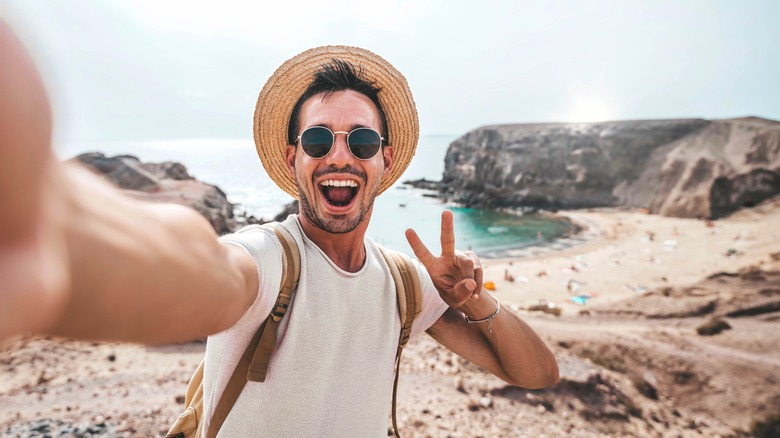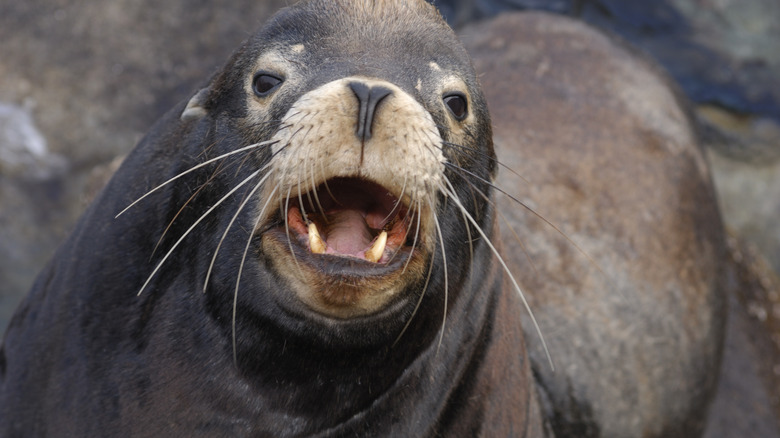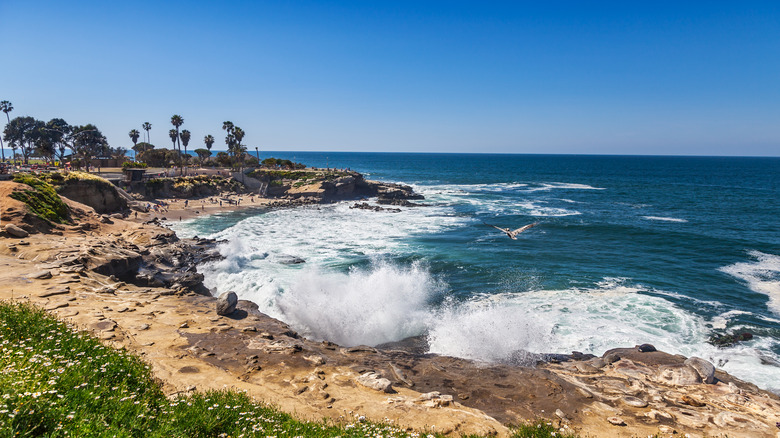Too Many Tourists Visiting California Underestimate The Danger Of This Cute Creature
Safekeeping travel memories with the help of a scenic selfie can be the perfect way to commemorate a trip. However, today's social media-driven world has made travelers a little too keen to capture the moment — even when it's unsafe. In fact, this hazardous practice has caused such a stir that some destinations have even imposed strict bans on taking selfies. Disobeying the rules could get you in some pretty deep (and expensive) trouble with local authorities.
One of the most recent locations to be added to the no-selfie list is La Jolla. Roughly 12 miles north of downtown San Diego, the seaside neighborhood is one of the most underrated beaches in California. With its rocky coastline, impressive views, and picturesque rugged beaches, La Jolla's unassuming natural beauty makes it a go-to spot for tourists and locals looking to relish the scenery in peace.
However, there's one more so-called attraction that, until recently, drew in way more crowds than were welcome: La Jolla's sea lions. Over 200 of these charming creatures currently call the La Jolla Cove home and use it as a prime spot for resting, swimming, and mating between June and August. Unfortunately, due to the hordes of tourists looking to snap an up-close and personal selfie with the wild animals — and ultimately putting themselves in danger — the local council was forced to stop the nonsense in November 2023 by fully closing visitor access to Point La Jolla.
Harassing animals in the wild is actually illegal (and dangerous)
One issue that led to the ban was unruly tourists' tendency to push their luck and invade the sea lions' personal space. They threw rocks at them, followed them into the water, and even propped children on their backs for a photo-op. These occurrences necessitated the ban to protect the sea lions and tourists.
Although typically docile, sea lions can quickly turn dangerous when threatened. This is especially common during the pupping season — between May and October — when cubs are born, and mother sea lions are particularly protective. To add to that, the average adult sea lion can weigh upwards of 600 pounds; messing with them can lead to a painful bite. And considering their mouths are full of bacteria, a bite could also develop into a pretty gnarly infection. That photo doesn't seem worth it, huh?
Furthermore, according to federal regulations, feeding and harassing wild animals is illegal. Per the Marine Mammal Protection Act, any type of contact with sea lions is strictly prohibited and could result in civil penalties of up to $34,000 (via NOAA Fisheries), as well as up to one year in prison plus criminal fines. The reason? Frequent contact with humans forces these animals to change their routines. This can also cause them to become less aware of potential dangers like boats — both factors risk injury or death.
Catching a glimpse of sea lions in their habitat
Though you can't get near sea lions here, you can still watch them sunbathe and play in their natural habitat. Today, visitors are still welcome to make the trek over to La Jolla to see them — it just has to be done from a respectable distance. Some of the most popular spots to see the sea lions include the sea caves area, the boardwalk from La Jolla Cove, and Shell Beach. This last option even looks out onto Children's Pool and Seal Rock — both of which are well-known for hosting a sea lion colony.
Alternatively, if you're feeling adventurous, there are also plenty of kayaking tours along La Jolla that'll take you near the sea lions' hang-out spot. One of the most popular options is La Jolla Sea Cave Kayaks, which currently boasts a 5-star rating and more than 1,000 reviews on Tripadvisor. Plus, once you're out on the water, don't be surprised if a curious sea lion makes their way toward you and your crew — this is fine, so long as you're not purposefully calling them over. Just remember: no touching, feeding, or grabbing allowed!


